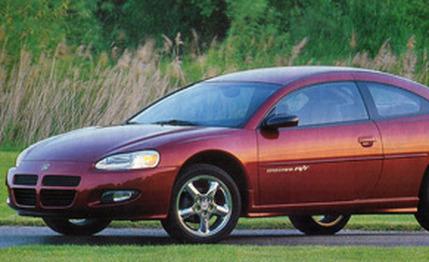
 First Drive Review
First Drive Review
The opening-night preview of these cars turned out to be a bit like walking into the weekday matinee of a Broadway show and being greeted by a sign in the lobby announcing, "In today's performance, the part of the dashing sports coupe, Avenger, will be played by Stratus, better known for his solid-citizen sedan roles. And standing in for Cirrus, the lead sedan, will be Sebring, just in from her world tour as a topless dancer."
The "show" was a simultaneous rollout of four new cars built on two completely different platforms that formerly wore five different nameplates-Cirrus, Stratus, Breeze, Sebring, and Avenger-but now are limited to just the Stratus and Sebring monikers. The four-door versions, which still share their underpinnings with the Sebring convertible that "opened" last April in New York, are designed by DaimlerChrysler. Their now-homonymous two-door siblings are built by Mitsubishi, once again, on a stretched Mitsubishi Eclipse chassis.
It's tempting to attribute this name consolidation to synergies made possible by DC's recent purchase of a controlling interest in Mitsubishi, but that's not the case. In fact, the new cars no longer share Mitsubishi V-6 and Chrysler four-cylinder engines. Rather, it was a move to cut the cost of marketing four brands. Automotive Darwinism leaves us with the strongest sellers-the Stratus and the Sebring.
Both platforms are substantially upgraded with new engines, sheetmetal, and interiors. Top-end four-doors get an all-aluminum DOHC 24-valve, 2.7-liter V-6 with a dual-resonance intake manifold cribbed from the base Dodge Intrepid ES but rotated 90 degrees for transverse duty. Its output is down just slightly from the Intrepid ES's, at 200 horsepower and 193 pound-feet-a healthy bump from the old Mitsubishi 2.5-liter's 168 and 170. Base cars get last year's 2.4-liter four with upgrades for improved noise reduction and to meet the ULEV standard. The latter should help land lucrative government fleet contracts. A four-speed automatic (with AutoStick on top models) is standard in all four-doors. The low-selling 2.0-liter five-speed stick has been given the hook.
The Mitsubishi Eclipse we've known and loved donates its powertrains to the Stratus and Sebring two-doors. Our favorite, of course, is the 3.0-liter SOHC 24-valve V-6 linked up to a five-speed manual. Available only in 50-state LEV tune, it makes 200 horsepower and 205 pound-feet-the same as in California Eclipses. That's a hefty 22 percent improvement over the outgoing 2.5-liter six. A Mitsubishi 2.4-liter four anchors the lineup, generating 147 horsepower and 158 pound-feet of torque. Either engine can be had with a five-speed manual or a four-speed auto, with Mitsubishi's fore-and-aft-gate manumatic shifter (rechristened AutoStick) in top-of-the-line versions.
Shoehorning the taller 2.7-liter six into the four-door required raising the cowl and Pinocchio-ing the nose by about three inches. This dilutes the distinctive bulldog stance of the previous model. A rubber-isolated, arc-welded front-suspension crossmember boosts rigidity. It's also designed to shear off and slide beneath the car in a severe crash. This, along with added gusseting for side impacts, helps improve bending rigidity by 33 percent and torsional stiffness by 13. All the upgrades add about 100 pounds. Detail changes outlined in our Eclipse coverage (C/D, May and August 1999) boost two-door rigidity by 90 percent in bending, nine percent in torsion.
The brakes received special attention on the four-door. Larger calipers that are 25 percent stiffer pressing on low-noise semi-metallic pads that are four millimeters thicker greatly improve brake feel and longevity. Cooling ducts help reduce fade, and the ABS now provides electronic proportioning front to rear and side to side (for improved braking in turns). The pedal felt firm and communicative during hard running on a twisty handling circuit.
Dodge and Chrysler versions of both models have distinctly different shock, spring, and tire tuning tailored toward sporty handling at Dodge and ride comfort at Chrysler. Extra effort was expended to limit noise paths on four-doors, with new bushings and urethane spring isolators and anti-roll-bar mounts. Rebound springs inside the shocks allowed the front anti-roll bar to shrink. Wheel and tire diameters are up an inch, with 205/65R-15s fitted on base cars and 205/60R-16s on the top models.